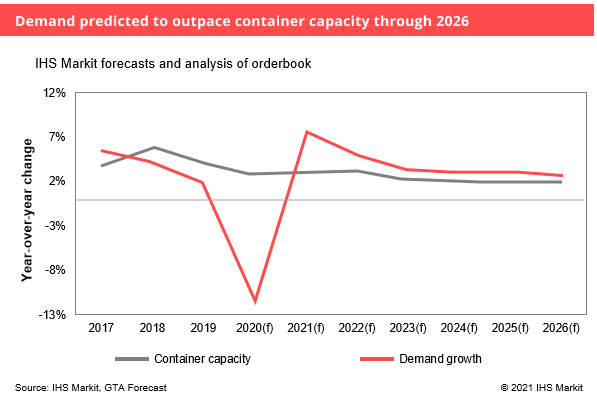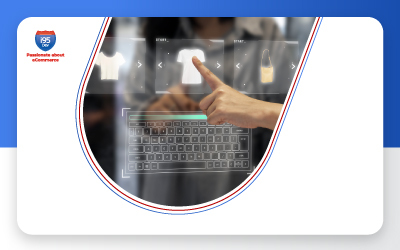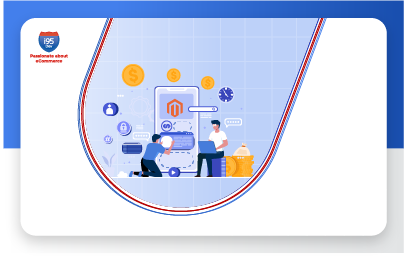6 Strategies to Streamline
Order Fulfillment this Holiday Season

It is also proving true that the demand for container shipping is rising sharply, but deployed capacity isn’t keeping pace, according to IHS Markit.
Rising competition and increasing customer expectations mandate brands to deliver orders on time.
Online shoppers, especially during the holiday season, feel that prompt and worry-free shipping plays a vital role in deciding where to spend their money. However, when a holiday delivery comes in late, 46% of shoppers will look elsewhere the next time they want to place an order online. Hence, a solid fulfillment strategy must ensure you do not lose almost half of your customers. Read on to understand retailers’ strategies to streamline the order fulfillment process this holiday season.
Also Read: Holiday Season – 5 Challenges B2C eCommerce Retailers Must Prepare for Now!
1) Integrate the Right Systems
Your existing disconnected or loosely connected systems might have worked for you for the entire year, but holiday seasons are known to put the best of systems in trouble. While investing in infrastructure to gear your systems for the holiday rush is required, doing that alone is insufficient. You must ensure that the right systems are integrated and talking to each other for streamlined and timely order fulfillment.
Integrating your eCommerce and ERP/ Warehouse management system ensures that you do not oversell your products. In addition, it expedites order fulfillment with quick order movement from your eCommerce store to your ERP/ Warehouse management systems.
2) Ensure you are Adequately Staffed and Trained
Did you know Amazon is hiring 150,000 people for full-time, temporary, and part-time positions throughout its US businesses to help them deal with the holiday season this year? This trend is no different for most other online retailers. Companies must focus on increasing their warehouse and customer service employees to account for the increase in order volume and timely delivery during the holiday season.
Not only that, you must assess the strengths of your seasonal workers and place them in positions where you can capitalize on their skills and adequately train them to ensure you continue to provide the same brand experience.
3) Relationship with your Suppliers & Shipping Providers
It is not sufficient if you alone are ready for the holiday season. It is equally important, if not more, that your suppliers and shipping providers are ready for this too. Use your past sales data to forecast the expected demand this year and share the projections with your partners – suppliers and shipping providers. Setting the expectations right with your partners is very important and if required, help them build their systems and processes to match those expectations.
Businesses must even consider backups if weather or other unforeseeable events occur. Evaluate the various points in your supply chain and walk through common what-if scenarios. For example, if your carrier delays a delivery because of a snowstorm, then what is the alternative? Having backups, even if more expensive, can prevent bottlenecks
4) Manage Customer Expectations
While it might be tempting for businesses to offer unrealistic timelines or extend the deadline for guaranteed delivery, it is important to understand that increasing order volume can bring unforeseen challenges for timely order fulfillment. With customer satisfaction linked to timely order delivery, businesses need to understand their order fulfillment speed and capacity and their carrier’s holiday schedule to set realistic delivery expectations with their customers.
Also Read: 8 Campaign ideas for Holiday Season
5) Anticipate and be Prepared
Leverage your understanding of the industry and past sales data to anticipate orders and be prepared in advance. There are several things that you can do to expedite the order fulfillment process like
Reconsider where items are placed in your Warehouses – Identify and place top-selling items in hot pick zones to reduce the time it takes to walk, pick and pack that item; increasing productivity and reducing the fulfillment time.
Pre-package Items – Pre-pack selected items to save additional time.
Segregate single-piece orders – Orders can be bucketed based on criteria like single-piece orders, multi-piece orders, orders requiring special attention, etc. Orders falling in each bucket can then be assigned to a different team for improved productivity and to streamline the fulfillment process.
6) Consider Other Delivery Options
Explore and plan alternate delivery options for improved customer experience. For example, you could consider alternatives like:
Distributed Fulfillment – Invest in setting up additional fulfillment centers – the additional centers can act as backups for one another and expedite fulfillment by sharing the order fulfillment load. Businesses can even consider alternatives like short-term warehousing contracts, partnerships with other companies, or stocking products in their shipping carrier partner’s warehouse for faster delivery.
In-Store Pickup – A distributed fulfillment strategy that can do wonders during the holiday season. Customers waiting too long to place orders are not uncommon.
These customers have a few options: place an order online and hope for the best, or try their luck at a nearby store packed with a frenetic holiday crowd, or place an order online with an in-store pickup option and drive to a nearby store where the order is packed and ready for pickup.
Also Read: Checklist for the Post-Holiday Season
What strategies are you adopting to prepare for a fantastic holiday season? Let us know by commenting below.
Consider 3PL Providers
3PL providers offer great plans and have processes to store, manage and transport your orders in peak seasons. They guarantee to keep up with the increased flow of order volume under any conditions. Plus, by outsourcing fulfillment, you can focus on seasonal marketing and driving sales, while leaving the order fulfillment to the professionals.
About i95Dev
i95Dev is a next-generation eCommerce company specializing in Magento. We are the leaders in integrating Magento eCommerce with ERPs (GP, AX, NAV, Sage 100, SAP Business One), CRM (Dynamics CRM, Salesforce), and POS (Dynamics RMS, Mobile POS) systems. Our integrated eCommerce solutions give businesses the scalability they need to handle any surge in traffic while streamlining their order fulfillment processes. Contact us if you need more information.






